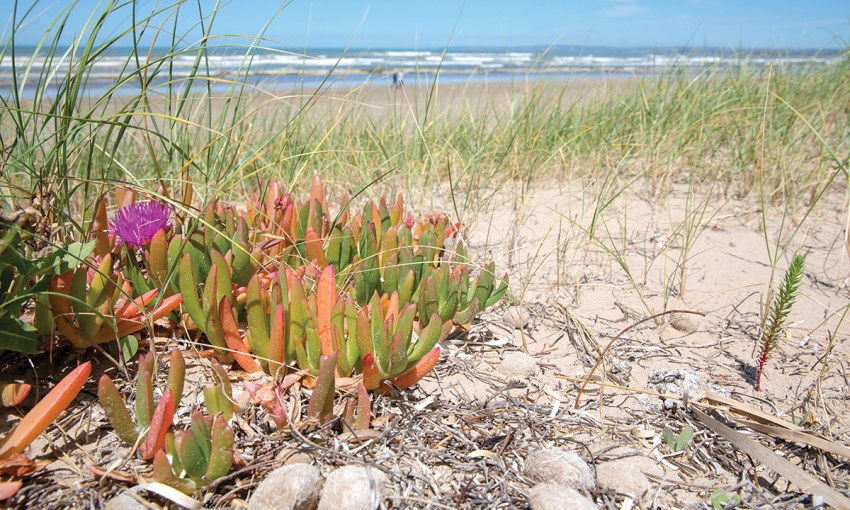Gardening brings its fair share of challenges and creating a thriving garden near the coast could be the greatest of all. But the key to successful coastal gardening is simple: knowing which plants love to be beside the sea.
Oh, we do love to be beside the seaside…
There’s nothing quite like being near the beach. But for gardeners, it presents a whole range of challenges: free-draining, sandy soil, combined with blazing summer heat and salt-laden buffeting winds, make for tough plant conditions. For those gardeners struggling to maintain a Plains- or Hills-style garden in this location, there are a number of species that have adapted to not only survive, but thrive along the coast.
Adelaide’s pre-colonial dunes, which ran the length of our coastline, have long since been hidden under suburban homes, gardens and streets. But remnants of these once-important, ecologically significant habitats can still be seen … think the Aldinga Scrub and Washpool to the south and Tennyson Beach to the north. What’s most surprising in these spots are the abundant and diverse plant life growing there successfully.
When it comes to creating a coastal beauty, the first thing to consider is where you are positioned, because this has a major influence on plant selection. Esplanades are frontline, taking the full force of nature and a peek into the dunes gives an excellent example of the plants that withstand these tough elements. Those looking for a home-grown dune facsimile need look no further than varieties such as coast saltbush, coast cushion bush and coast daisy-bush; they transition comfortably from wild to tame spaces.
The further away from the beach front, the more houses there are to take the brunt of the weather and the more protected the gardens become. Without that direct coastal exposure, your plants’ palette is dramatically increased. Keep in mind that while many plants identify as suitable for coastal locations, only a small number perform to their optimum in a frontline position – always research or check the label for this information.
Australian native plants from the Eyre Peninsula and Mallee regions (as well as from across the border in southern Western Australia), have evolved to successfully grow in low rainfall and sandy soils. These beauties do well along Adelaide’s beachfront.
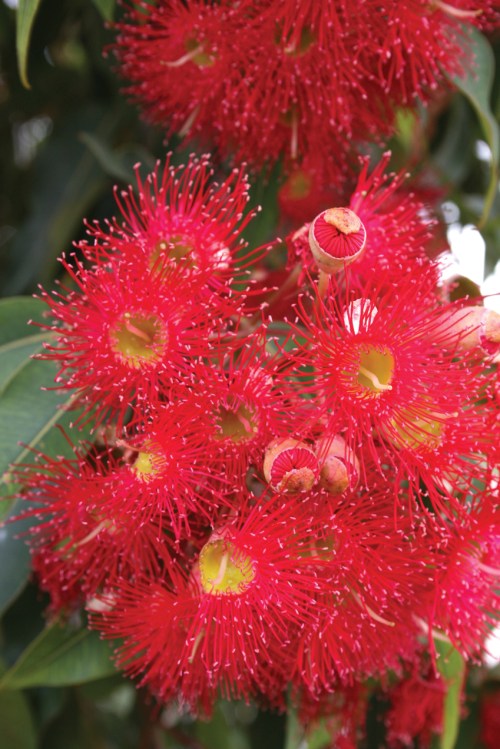
Even though coast-loving varieties perform admirably in sandy soils, the more fertile, and moist the ground, the better they grow. Well-aged organics such as compost and manure dug in acts like a sponge holding valuable water and nutrients around the root zone. Sand is hungry and organic matter can travel through the soil profile past that root zone, so topping up your garden every year with another load helps to maintain happy and healthy plants.
Mulch is a must. While coastal plants are natural water misers, spreading a layer of mulch across garden beds will reduce summer soil temperature, put the brakes on evaporation and improve plant growth. Plus, as the mulch decomposes, it adds more organic matter to the ground.
Layering plants, where the taller, more robust trees and shrubs offer protection from wind or sun to the smaller types around them, is how successful coastal gardens grow. Mimicking nature by planting in clumps and grouping similar plants always looks best, too. Take a walk past the dunes and see how plants populate this way.
Trees provide focal height and essential shade in a coastal garden. Free-draining sand tends to keep many trees a little shorter than their Plains and Hills planted partners.
Silver banksia (Banksia marginata) growing to around 5 metres has a broad, domed canopy with a thick covering of gold and silver serrated leaves. Its large, stunning, yellow cylinder-shaped flowers borne from spring to autumn are a beacon to insects and native birds such as honeyeaters and parrots.
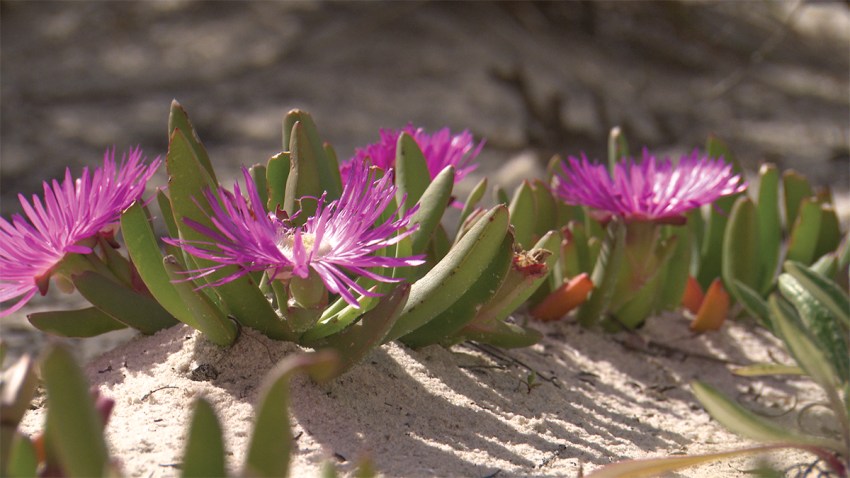
Flowering Gums (Corymbia ficifolia) are widely grown as an ornamental tree. Their bright flower clusters of red to orange, depending on the cultivar, provide a dazzling splash of summer colour enjoyed by owners, visitors, birds and insects alike. Among a range of seed and grafted varieties, keep an eye out for 2.5 metre growing “Mini Red” or vibrant orange flowered “Baby Orange”.
Notable Wattle (Acacia notabilis) is one of a number of acacias that enjoy a coastal home, though not on the beachfront. Growing to around 2-3 metres, this elegant shrub makes an attractive windbreak. Foliage-filled, its blooms of bright yellow balls are produced in open clusters from late winter to spring.
Common Boobialla (Myoporum insulare) is another large shrub that will take whatever comes its way. You’ll even find this growing happily along The Esplanade. An excellent hedge or screen due to the heavy clothing of green fleshy leaves, enjoy the star-shaped white flowers from winter to spring, then let the birds feast on the purple berries that develop after.
Grevilleas, as a rule, like free draining soil, so they tend to do well in sandy spots that have been enriched with organic matter. Their diverse range of growth habits is equally matched by their varied flower types and colour. Smaller growers are increasingly popular, including Grevillea lavandulacea “Tanunda” (discovered in that region of South Australia), along with Woolly Grevillea, a one-metre-tall gem, producing spidery flowers of white, cream, red and pink (cultivar dependent) from winter to spring, with some spot flowering in the other seasons. Does well in full sun to semi shade.
Low-clumping Dianella are great gap fillers. Their strappy and stiff blue-green leaves provide interest among the other foliage types. The delicate nodding blue flowers extending above the plant on long wiry stalks are a treat. Enjoying both full sun and part shade, this is great for borders and pots.
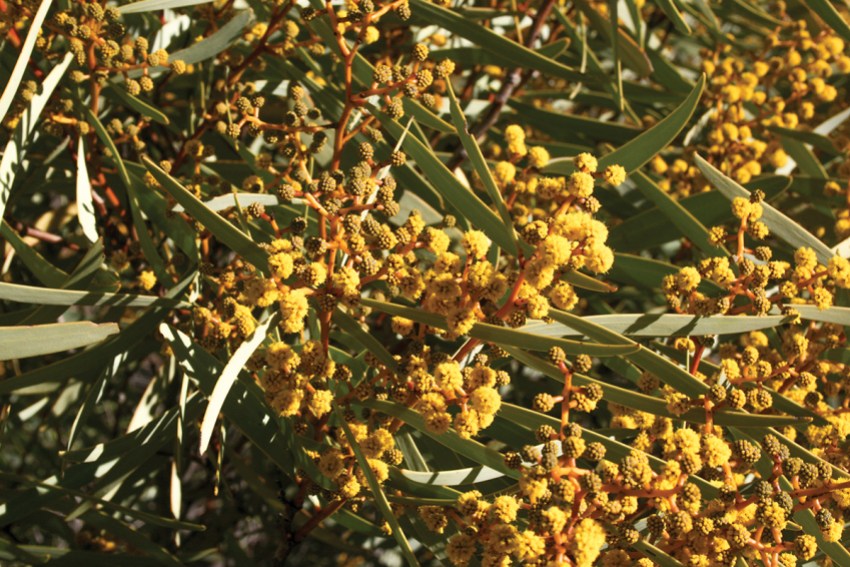
Another sand-loving clumper is Knobby Club-rush (Ficinia nodosa). Growing to one metre, it finds a place in any coastal garden due to its ability to tolerate frontline conditions. The stiff, upright cylindrical leaves are joined by a continual cycle of round brown flower heads making this a perfect accent plant to use in groups across the yard.
Native Lilac (Hardenbergia violacea) adds a vertical colour touch to the coastal yard. This trailing climber produces a wonderful spring-through-summer display of purple pea flowers – white and pink options are also available. Perfect on a fence or verandah post, you can also let it spill over a retaining wall or across the ground. Enjoy its versatility.
One of the hardiest groundcovers for coastal gardens is Boobialla (Myoporum parvifolium). Like its larger growing cousin, this is an easy care and reliable performer. Spreading up to 3 metres wide and 30 centimetres deep it creates a thick weed-suppressing mat and a palatable alternative to turf, if you find that hard to maintain. Available in a range of forms and flower colours.
Australian Pig Face or Karkalla (Carpobrotus rossii), is an exceptional performer in coastal plantings whether used as a dune stabiliser or home garden filler. Quick to spread, this low, somewhat unremarkable, succulent groundcover has a number of surprising attributes. Its large purple daisy flowers are a joy over spring and summer, while the fruits that develop post-blooming and each plump leaf are edible. The salty leaves can be eaten fresh or steamed, and the reddish-purple fruit tastes like a fig.
There are myriad native and exotic plants immensely suited to coastal gardens. Whether you are starting from scratch, have space for a few more, or wanting to lift an ailing yard, drop into your local garden centre or specialist nursery for advice and check out the range of sand-lovers.
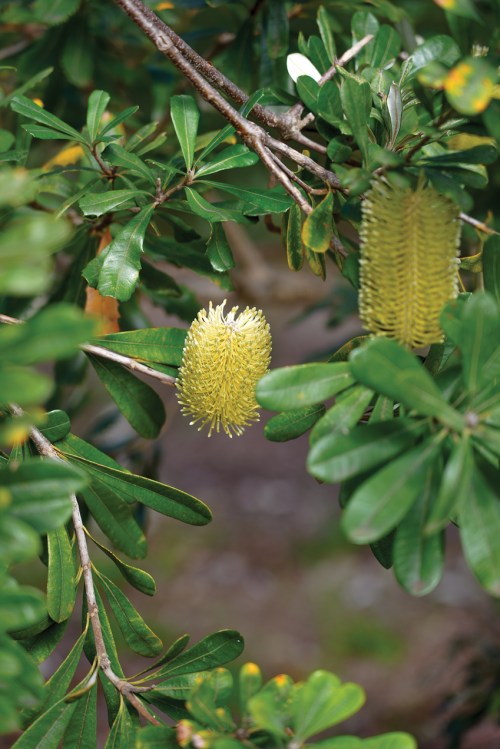
This article first appeared in the January 2023 issue of SALIFE magazine.



